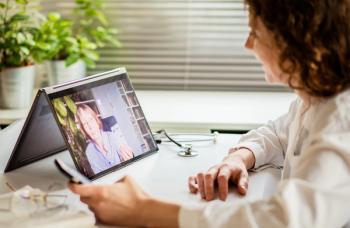
7 tips to stop technology from damaging the patient experience
A recent American Medical Association (AMA) study shows that physicians spend 37% of their time on electronic health records (EHR) or desk work while meeting with patients.
A recent
“Patients want to be respected and listened to carefully,” Maples says “Technology coming between physicians and patients is a significant issue and something we need to come to grips with as clinicians.”
Here are seven tips to
1. Spend the first few minutes of each patient visit making a connection. “You have to spend some time where technology is put aside,” says Maples. “You cannot ever forget to have that human-to-human connection that has to take place before any technology enters the space.”
2. Ask permission. If you need to use technology, ask the patient’s permission and explain what you are doing. “As you are typing, talk to the patient and use it as an opportunity to reinforce what you heard from the patient and recap the information,” says Maples. “Make the notes part of the conversation, not a separate episode.”
3. Invest in improving your typing skills. Ken Kubitschek,
4. Position the computer in a patient-friendly position. The computer should not be shoved in a corner, but placed like it is the third person in the conversation. “It’s frustrating for the patients if they are at a table and you have your back to them and are hunched over a computer along the wall,” says Kubitschek. If you have to use a poorly-positioned computer, ask permission and explain that it is for accuracy and safety so the patient understands it’s an important task related to his or her visit, says Maples. Laptops or tablets can provide a mobile option that can be positioned as needed.
5. Use technology to enrich the experience. Computers don’t have to be just for data entry. “X-rays and CAT scans can be shown on the screen, and computers can show trends or anatomy if you are planning an operation,” says Maples. “Use it as an educational tool for the patient.”
6. Delegate tasks to spend more time with patients. “Use your assistants to their maximum ability,” says Kubitschek. “There are a lot of health maintenance items they can input that can save physicians a lot of data-entry time.” If you can postpone notetaking until after the visit, do so.
7. Don’t complain. No matter how frustrating computers and software can be, keep those feelings to yourself. “I don’t complain about the computer,” says Kubitschek. “All that does is emphasize the technology more and focuses the discussion on you. They don’t come to your office to hear your complaints; it just makes them more frustrated.”
Newsletter
Stay informed and empowered with Medical Economics enewsletter, delivering expert insights, financial strategies, practice management tips and technology trends — tailored for today’s physicians.








